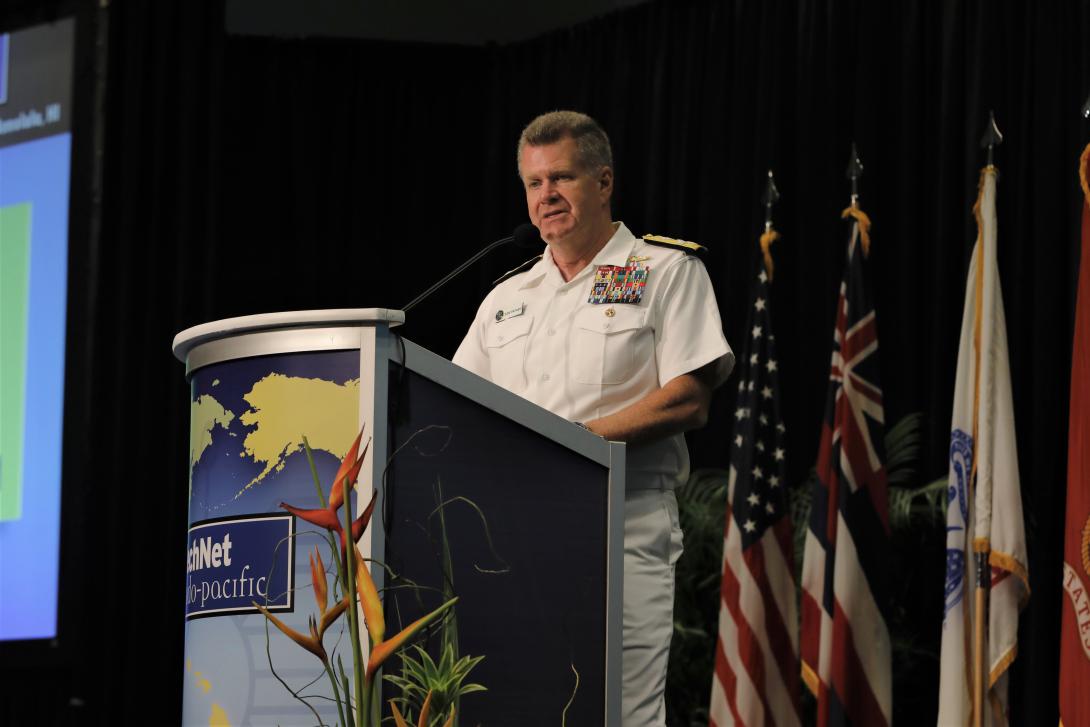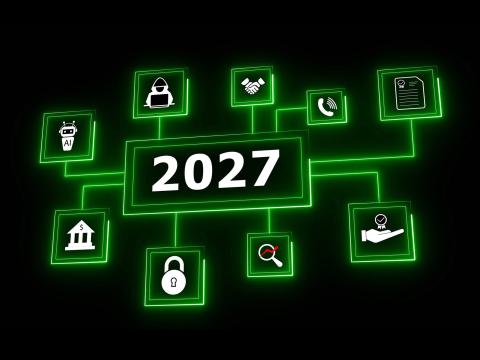Naval Technology for Today and Tomorrow
The leader of the U.S. Pacific Fleet is clear about what the United States is fighting for: our future and the futures of our children, allies and partners. Adm. Samuel Paparo, USN, commander of the Pacific Fleet, sees first-hand the activities of near-peer adversaries in the Indo-Pacific: illegal fishing, economic coercion and trafficking, with growing tensions in the region.
“What we're competing for is our international rules-based order, based on the principles of human dignity, human freedom, sovereignty, freedom of the seas and freedom of the skies,” Adm. Paparo stated. “It is all of the portfolio of international rules that have lifted 60% of the world out of poverty since the end of the Second World War, and 160,000 people out of poverty every single day. It is a worthy, worthy undertaking. In fact, our futures and the futures of generations depend on these values.”
The admiral also is clear that technological innovation from American industry is vital to U.S. success. “If you are within earshot of my voice, you must know that you're indispensable in our ability to deter that conflict and if necessary, to fight and win,” Adm. Paparo noted, speaking to industry and military leaders at AFCEA’s TechNet Indo-Pacific conference on November 3 in Honolulu. “We're living through incredibly consequential times, a period of intense competition, a period of incredibly high stakes and we sit here right now in the Central Pacific under the shadow of potential conflicts.
As for the most needed technologies, the commander identified blocking an enemy’s understanding of the battlespace, having a robust joint common operating picture, machine-to-machine operations with a human-in-the-loop, long-range fires and robust decision-making tools.
“Our most urgent technology gaps are number one, the ability to counter our adversary’s ability to see and understand the battlespace,” he explained. “Those are the technology gaps to dazzle, to deceive, and if necessary, to destroy, the sensors and the networks that enable an adversary to understand our own scheme, from fires and effects, maneuver and sustainment. With every single day, our adversaries are working to get better, and we are in a constant cycle of overmatch in our ability to get overmatch on our adversaries. Our number two gap is our own ability to have a widespread common operating picture that enables commanders at every level to be able to see the enemy, to be able to use machine tools to target and pair weapons and effects on enemy units.”
For the fleet, Adm. Paparo would like to see decision tools that enable leaders to make calculations that in the past were performed by humans, and instead leverage machine tools to perform operations in such a way that maximizes effects and warfighter survival “while still maintaining the elements of human accountability, which must be part of warfare for all of us,” he stated. “It is that ability to have a machine do machine tasks but maintain human accountability over the taking of human lives or the destruction of key critical infrastructure. These are the challenges that are ahead of us.”
In addition, Adm. Paparo identified so-called mass data analytics capabilities to understand if deterrence is having an effect.
“I would like mass data analytics to understand what the effects of our deterrence activity are on our competitors’ calculus,” he explained. “I'd like to know if it's moving the needle. And the way we know that is by what you see in open source, by their behaviors, and at times, high-level intel, but that ability to understand, so that it's just not activity that we're conducting …. Mass data analytics that would take us out of the intuition phase and into a deeper and richer knowledge based on the fusion of what we see in open source and what we see in terms of behaviors. I think that's the biggest technology challenge that I’d like to tackle.”

Our most urgent technology gaps are number one, the ability to counter our adversary’s ability to see and understand the battlespace.
The commander also identified operational analysis tools that “employ multiple quantitative techniques that enable us to dig to get machine calculations to support human decision making,” he noted. “And anything that fuses multiple sensors, and Rosetta stones that eliminate barriers between stovepipe data systems with different data standards, which enable a real-time picture of the battlespace with high-target quality level, location of key targets and identification of those targets.”
Basically, the fleet needs tools to support its operations in a highly complex environment, with systems that enable the understanding of the joint and allied picture.
ADM Samuel J. Paparo, USN, Commander, @USPacificFleet: The eplosion in innovation in information technology has to some extent thrown the paradigm of defense leading innovation on its head. #AFCEATechNet @afceahawaii @AFCEA @INDOPACOM pic.twitter.com/7nDKMyn2Ek
— Kimberly Underwood (@Kunderwood_SGNL) November 2, 2022
Regarding the latest inroads of China on the Solomon Islands—and elsewhere—Adm. Paparo advised that the United States will base its action on its shared values and interests.
“Our approach is a values-based approach,” the admiral stated. “It is not exclusive in any way, but [it is] to engage with the nations of the South Pacific based on our sheer history and based on our shared interests. How we should proceed is with engagement informed by our values. Throughout the South Pacific, there are key security gates, chief among these are maritime domain awareness to counter illegal fishing and to counter illicit trafficking. All the nations of the South Pacific are deeply dependent on the sea for the sustainment of their populations. That security assistance and security cooperation is [done] in such a way that that ensures that [commerce].”


Comments